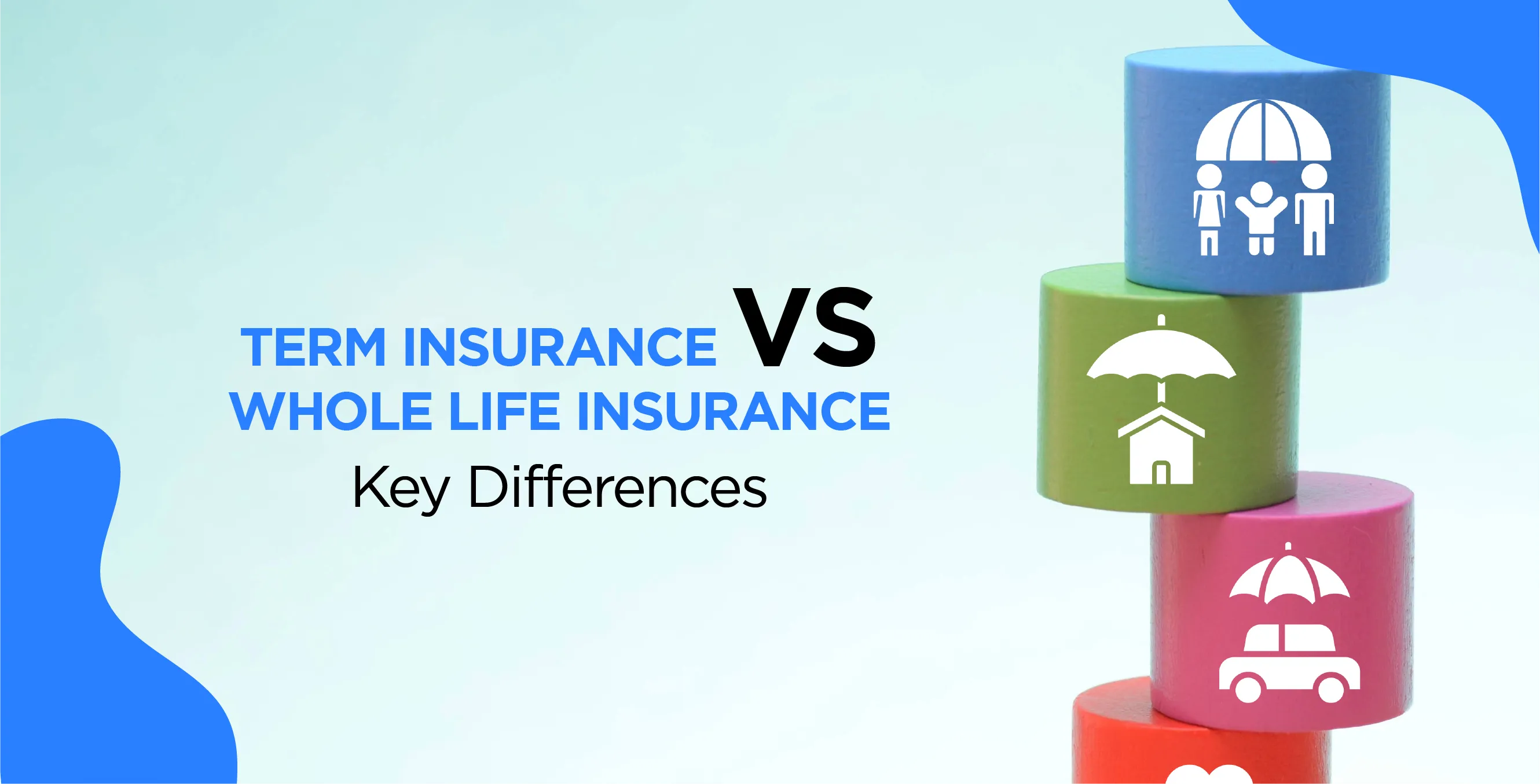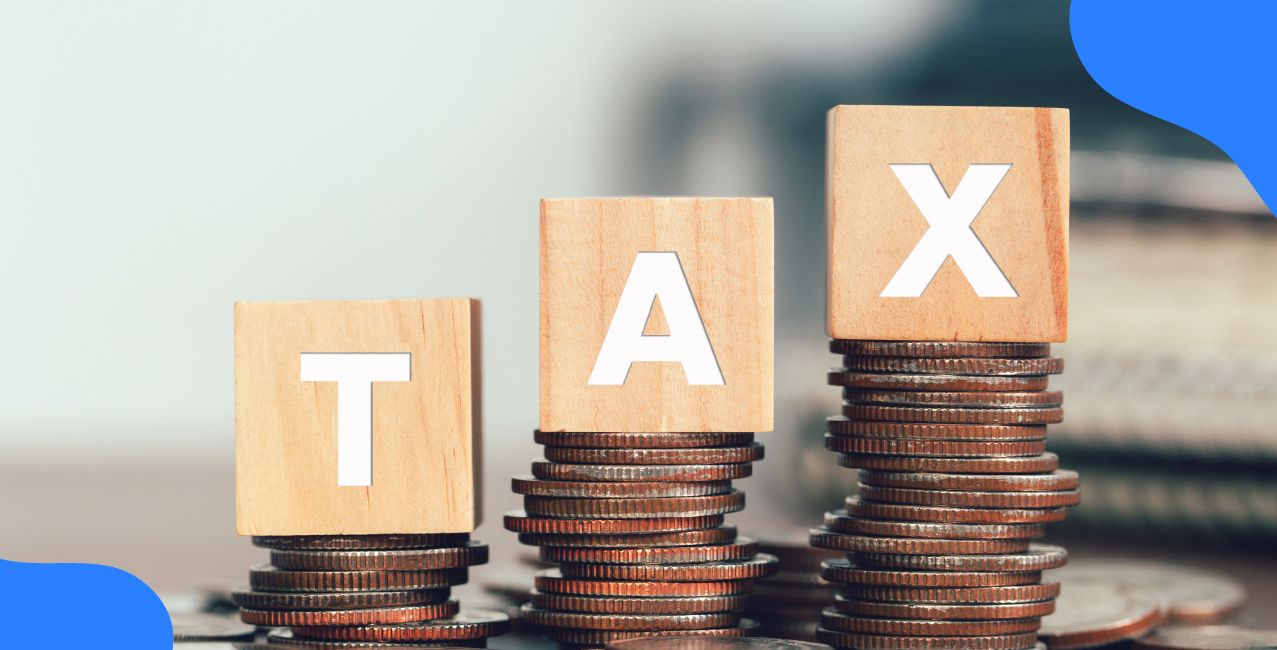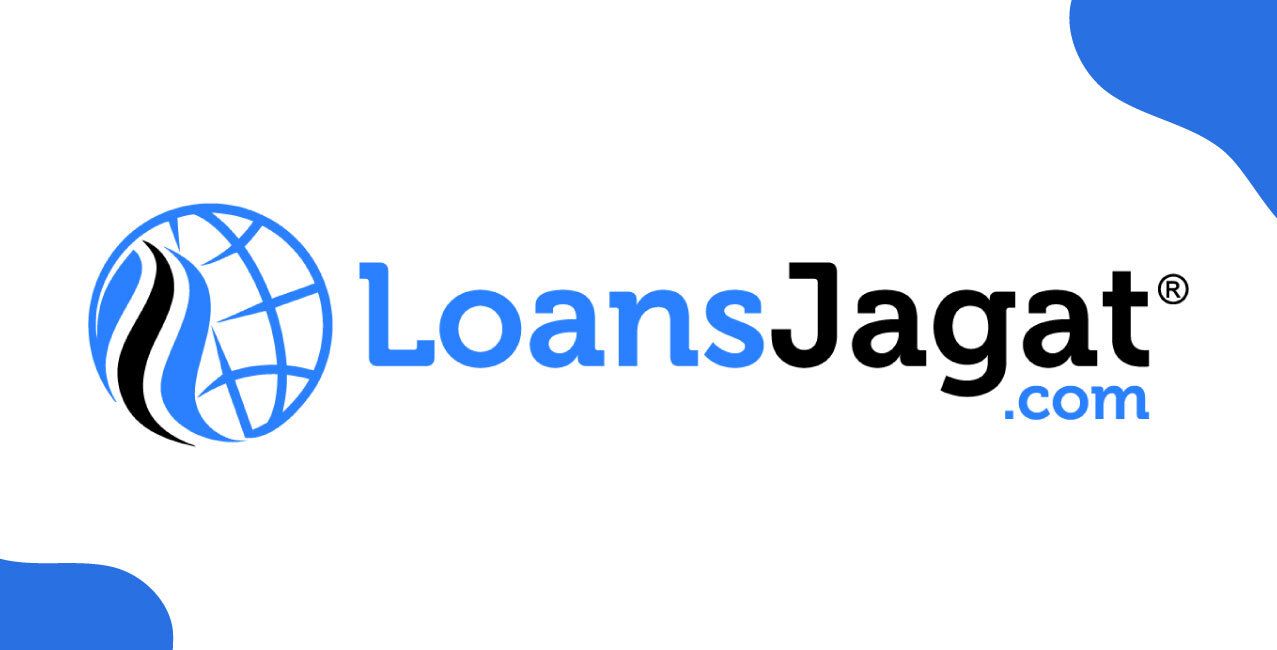
Author
LoansJagat Team
Read Time
5 Min
12 May 2025
Term Insurance vs Whole Life Insurance: Key Differences
Choosing between term insurance and whole life insurance can be confusing, but knowing the key differences helps. Here are 5 simple points to help you decide what suits your needs best.
1. Coverage Duration
Term insurance covers you for a set time, like 10, 20, or 30 years. If you pass away during this time, your family gets the money. If you live past it, the policy ends.
Whole life insurance covers you for your entire life, as long as you keep paying. It also builds savings you can use while you are alive.
Comparison:
Feature | Term Insurance | Whole Life Insurance |
Coverage Duration | Fixed term (e.g., 10–30 years) | Lifelong (up to age 99 or 100) |
Ends After Term | Yes | No |
Builds Savings | No | Yes |
Premium Cost | Lower | Higher |
Example:
Varun, a 30-year-old Bengaluru boy, earns ₹10,00,000 annually. He opts for a ₹1,00,00,000 term insurance policy for 30 years, paying ₹1,000/month. This ensures his family receives the sum if he passes away during the term. Alternatively, a whole life policy with the same coverage costs ₹4,000/month but offers lifelong protection and builds cash value. Varun chooses term insurance.
Term insurance is good if you want low-cost protection for a certain time. Whole life insurance is better if you want lifelong coverage and savings.
2. Premium Cost
Term insurance is more affordable because it only provides death coverage without any investment component. Whole life insurance costs more due to lifelong coverage and a savings feature that builds cash value over time.
Comparison:
Feature | Term Insurance | Whole Life Insurance |
Premium Cost | Lower | Higher |
Coverage Duration | Fixed term (e.g., 10–30 years) | Lifelong (up to age 99 or 100) |
Builds Savings | No | Yes |
Ideal For | Budget-friendly, temporary needs | Long-term financial planning |
Example:
Rajan, a 30-year-old from Pune. He buys a term insurance policy for ₹1,00,00,000 coverage, paying ₹1,000 per month for 30 years. Alternatively, for whole life insurance with the same coverage, he pays ₹10,000 per month until age 99. Term insurance is cheaper but offers coverage for a limited period, while whole life insurance is costlier but provides lifelong coverage and builds savings.
Read More - Tax Benefits of Life and Health Insurance Policies
3. Cash Value Component
Term insurance does not have a cash value. It only provides a death benefit if you pass away during the policy term.
Whole life insurance includes a cash value component. A portion of your premium goes into this savings account, which grows over time. You can borrow against it or use it to pay premiums.
Comparison:
Feature | Term Insurance | Whole Life Insurance |
Cash Value | No | Yes |
Savings Component | None | Builds over time |
Loan Option | Not Available | Borrow against the cash value |
Premium Use | Only for coverage | Covers both coverage and savings |
Example:
Rahul is 30 years old. He purchases a whole life insurance policy with a sum assured of ₹50,00,000. His annual premium is ₹60,000. By age 40, he has paid ₹6,00,000 in total premiums. The policy's cash value has grown to ₹2,00,000. Rahul can borrow up to 90% of this amount, i.e., ₹1,80,000, for emergencies. Alternatively, he can use the cash value to pay future premiums. This feature provides Rahul with financial flexibility while ensuring lifelong coverage.
Read More - Tax Benefits of Life and Health Insurance Policies
Whole life insurance offers both protection and a savings feature, providing more financial flexibility.
4. Flexibility and Complexity
Term insurance is straightforward and flexible. You choose the coverage amount and duration, and premiums are generally lower. However, it lacks investment components and does not build cash value.
Whole life insurance offers lifelong coverage with a cash value component that grows over time. While it provides more benefits, it comes with higher premiums and more complex features.
Comparison:
Feature | Term Insurance | Whole Life Insurance |
Coverage Duration | Fixed term (e.g., 10–30 years) | Lifelong (up to age 99 or 100) |
Premium Cost | Lower | Higher |
Builds Cash Value | No | Yes |
Loan Facility | Not Available | Available |
Policy Flexibility | High (adjust coverage, renew) | Moderate (adjust premiums, riders) |
Complexity Level | Low | High |
Example:
Raj is 28 years old. He buys a term plan for ₹1,00,00,000 with a 30-year term, paying ₹900/month. Simple and easy to manage. Later, he upgrades coverage by renewing the plan.
His friend suggests whole life insurance. For the same ₹1,00,00,000, Raj would pay ₹9,000/month till age 99. It builds ₹3,00,000 cash value by age 40. He can take a loan, but the policy is more complex with riders and conditions.
Also Read - What Is Life Insurance and Why Is It Important
5. Payout At The End of The Term
At the end of a term insurance policy, if the policyholder survives, there is typically no payout unless the policy includes a Return of Premium (ROP) feature. In contrast, whole life insurance policies provide a death benefit to beneficiaries upon the policyholder's death, regardless of when it occurs during the policy term.
Comparison:
Feature | Term Insurance | Whole Life Insurance |
Payout at End of Term | None (unless ROP feature) | Yes (death benefit anytime) |
If the Policyholder Survives | No payout | Death benefit upon death |
Return of Premium | Available in ROP plans | Not applicable |
Ideal For | Temporary coverage needs | Lifelong coverage and legacy planning |
Example:
Raga is 27 years old. He buys a term plan for ₹1,00,00,000, paying ₹1,200/month for 30 years. If he lives till age 57, he gets nothing.
But with a Return of Premium (ROP) plan, he would get ₹4,30,000 back.
If Raga chooses whole life insurance instead, paying ₹10,000/month, his family gets ₹1,00,00,000 whenever he dies – even at age 95.
Conclusion
Term insurance is cheap and covers you for a set time, but pays nothing if you outlive it. Whole life insurance is costly but covers you for life and builds savings. Choose a term for short-term, low-cost needs. Pick whole life for lifelong coverage and savings. Decide based on your budget and goals.
FAQs
1. Which is cheaper, term or whole life insurance?
Term insurance is cheaper because it only covers you for a fixed period.
2. Does whole life insurance give money back while I am alive?
Yes, whole life insurance builds cash value that you can borrow or use.
Other Informative Pages | ||
Choosing the Right Term Insurance Plan: A Guide to Premium Rates | ||
About the Author

LoansJagat Team
‘Simplify Finance for Everyone.’ This is the common goal of our team, as we try to explain any topic with relatable examples. From personal to business finance, managing EMIs to becoming debt-free, we do extensive research on each and every parameter, so you don’t have to. Scroll up and have a look at what 15+ years of experience in the BFSI sector looks like.

Quick Apply Loan
Subscribe Now


